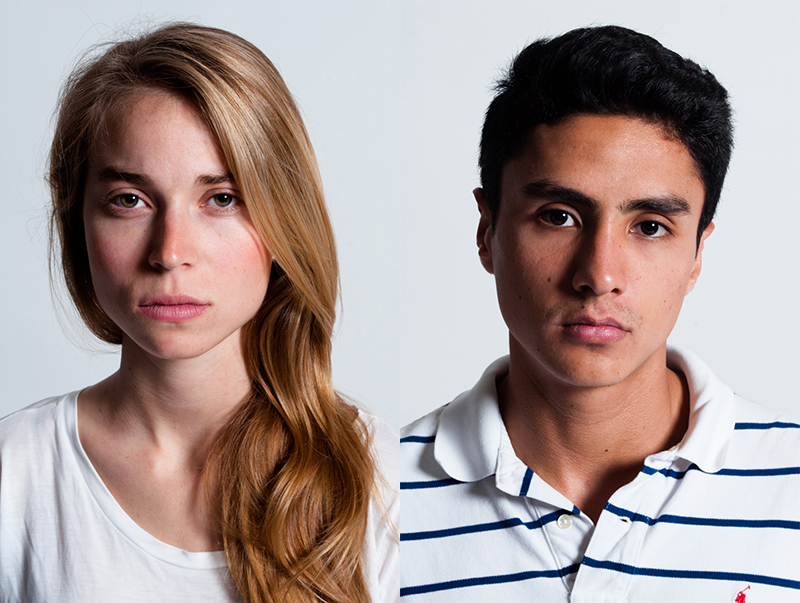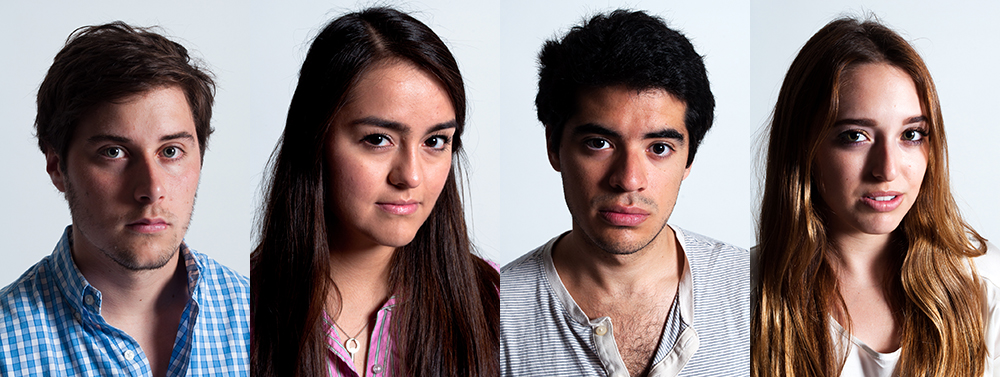Define Hispanic

The need to define U.S. citizens racially and ethnically has always permeated American society and culture. Usually the word “Hispanic” will suffice in describing almost 665 million humans that live in the United States, Latin America and in Spain. Classifying such a large group of people under one category is detrimental on many levels. This action neglects the importance of truly understanding of a group of people and their culture.
These portraits of “Hispanic” people are meant to show the diversity that exists in Latin America and Spain, and that there is no stereotypical “Hispanic”. American cinema frequently portrays “Hispanic” people as drug dealers, landscapers, or maids. My portraits are meant to defy the stereotype of a “Hispanic” and emphasize the physical differences of each person, alluding to cultural differences as well.
The idea that all “Hispanic” people are dark-skinned and have brown eyes is false, which becomes evident in these photographs. Two subjects have blonde hair and blue eyes. “Hispanic” people simply do not look the same. Speaking Spanish is the only factor that unites most “Hispanic” people, but it is something that cannot be seen.
Through these portraits I aim to break down the boundaries produced by the construction of race. I am trying to show that race is not a real thing. It is an idea that is real for most Americans and that has seeped into our institutions and laws. Physical differences should not determine opportunity in life, but in America, they do. White privilege exists. Stereotyping and racism fuel this unjust reality, and they both need to end in order to achieve equality. The point of these photographs is to break the stereotypes that revolve around “Hispanic” peoples, thereby assisting the demise of racism.
